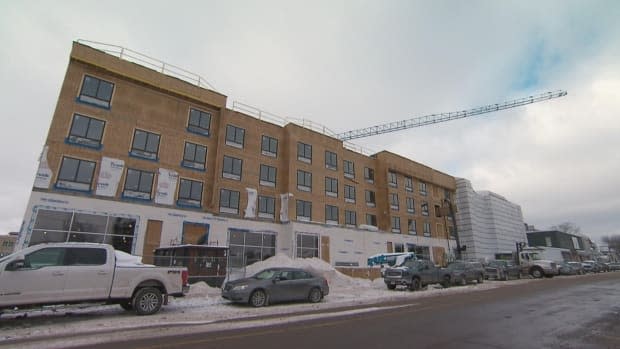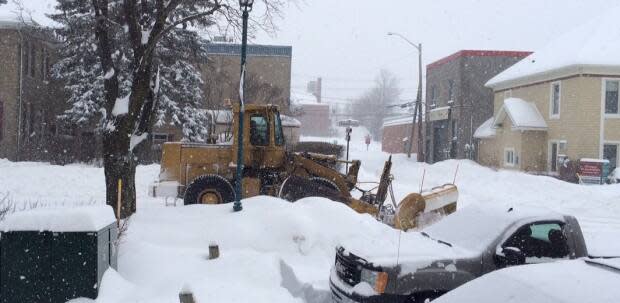Big, bigger, biggest: Saint John, Fredericton jostle for position as sizzling Moncton holds top spot
It was New Brunswick's largest urban centre as recently as 2003, but Greater Saint John is now 17 per cent smaller than Greater Moncton and is losing ground to Fredericton for the No. 2 spot.
New internal New Brunswick population estimates released Thursday by Statistics Canada offer insight into two decades of the cities' shifting positions and changing fortunes.
It shows a struggling Saint John, but one that has begun growing again and could ultimately fend off being overtaken by the capital city, according to Sébastien Lavoie, an analyst with Statistics Canada's Centre for Demography.
Lavoie said he can't say when, or if, Fredericton is expected to outstrip Saint John.
"We're not there yet, but that's kind of been the trend in the last few years," said Lavoie, who cautioned future growth among all communities could follow any number of paths.
"Population changes in New Brunswick are quite dynamic, so it doesn't mean that's where these things will stay."

Fredericton has steadily gained on Saint John since 2001
Greater Saint John had 39,000 more people than Fredericton in July 2001, but the capital has gained ground every year since and as of July, the difference between them was down to 20,748 people.
Much of Fredericton's gains happened between 2011 and 2015, when Saint John began shrinking.
That reversed itself in 2016. Greater Saint John began growing again and, in a new development for the area, 80 per cent of that expansion has been inside Saint John city limits rather than outside in nearby bedroom communities.
Saint John Mayor Don Darling said that alone makes him optimistic for the future.
"The first step is to stop the shrinking and to turn that around, so I think that is really positive news that has happened," Darling said.
"We've been talking about, focused on and working on population growth with purpose, and this is a validation of some of that hard work."

Moncton's tightening grip on the top spot
Whichever community eventually prevails as New Brunswick's second-largest, there is no disputing Moncton's place at the top.
After several years of impressive economic growth, the metropolitan Moncton area – which includes Dieppe and Riverview and the nearby villages of Memramcook, Hillsborough, Salisbury and Dorchester – grew 1.8 per cent to 158,695 over the 12 months ending July 1, 2020.
That placed it as Canada's seventh-fastest growing municipality, ahead of Toronto, Vancouver, Edmonton, Ottawa and 24 other metropolitan areas across the country.
It was the second year in a row population growth in Moncton has been inside the top 10 in Canada with little sign of that changing.
Greater Moncton Realtors du Grand Moncton recently reported 256 property sales by its members in December, 72 more than last December.
"No previous December had even cracked 200 sales," association president Parise Cormier said in a statement about the area's booming real estate market.

Last month, Moncton Industrial Development Ltd. (MID), which set a record for industrial park lot sales to companies in 2019, told CBC News it doubled that amount in 2020 and may have to open a fifth location.
Given the overall economy, "it's quite phenomenal that we were able to pull that off," MID general manager Pierre Dupuis said.
Greater Moncton first surpassed greater Saint John as New Brunswick's largest urban area in 2004.
It is now larger by nearly 27,000 people, and its economy bubbling has widened that gap annually.
Over the last five years, Moncton's population has grown by more than 12,300, compared to just over 8,100 in Fredericton and just under 3,500 in Saint John.
By contrast, the rest of the province shrank by 1,300 over the same time period.
Lavoie said most population growth in New Brunswick is driven by immigration and most new comers are choosing to settle in the larger urban areas.
"The three biggest cities are more attractive to immigrants, especially Moncton and Fredericton," he said.
That has been reshaping the makeup of New Brunswick.
Numbers show 51.4 per cent of residents now live inside one of the three main urban areas, up from 45 per cent in 2001.
NEW BRUNSWICK'S CHANGING POPULATION
AREA 2020 POP. CHANGE FROM 2015
Moncton 158,695 +12,328
Fredericton 111,024 +8,128
Saint John 131,772 +3,490
Other 379,985 -1,312
*Source: Statistics Canada. Population figures are all from July 1.

